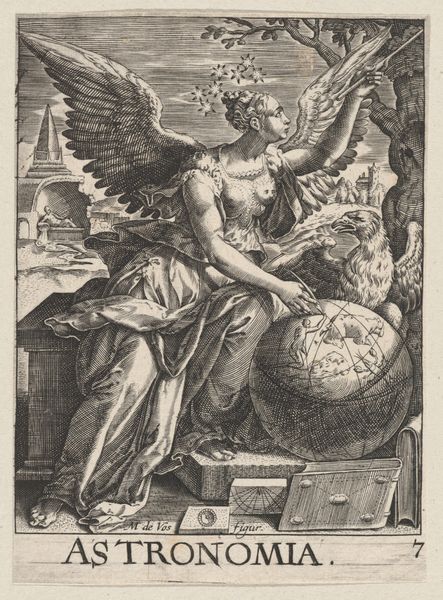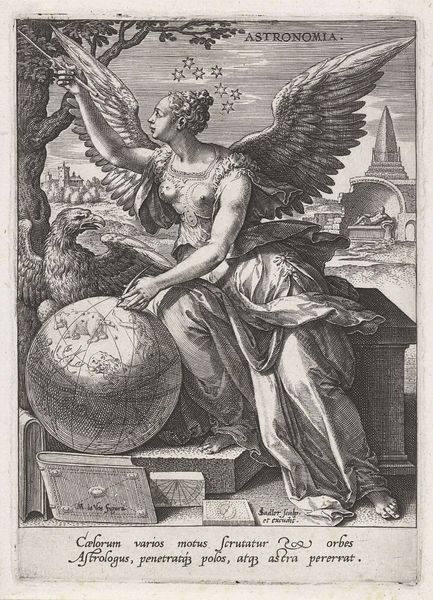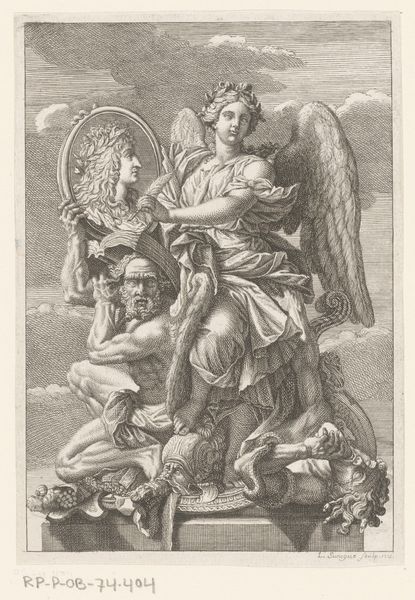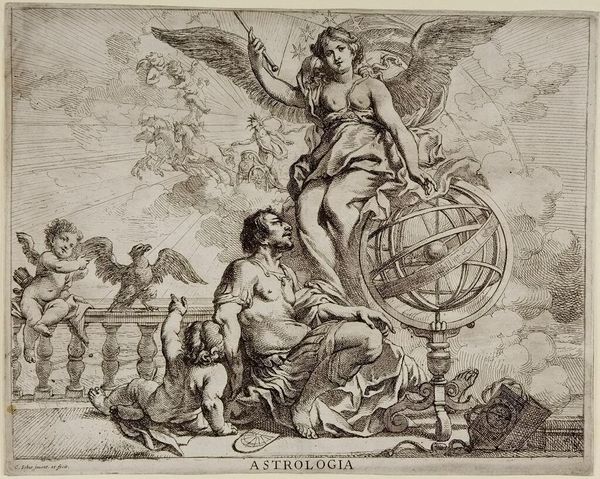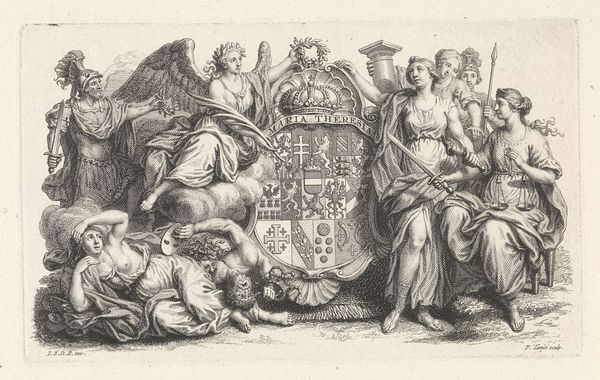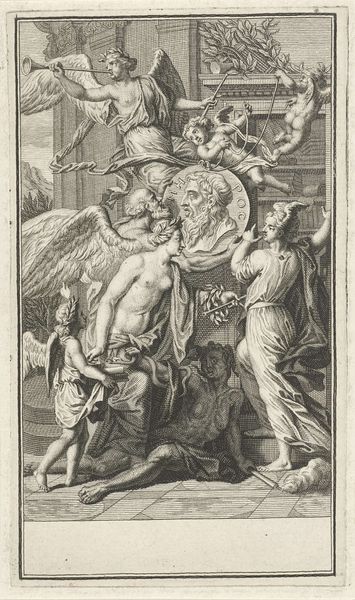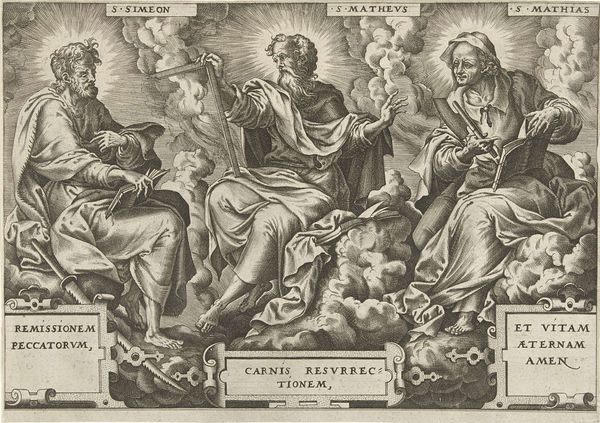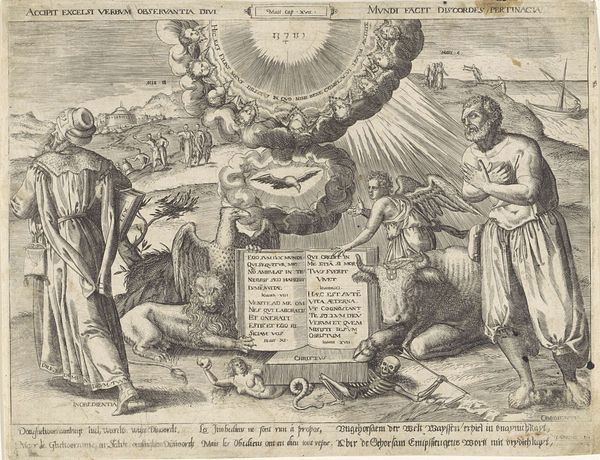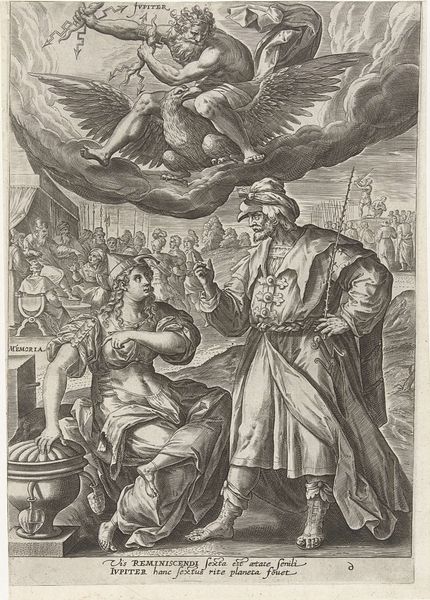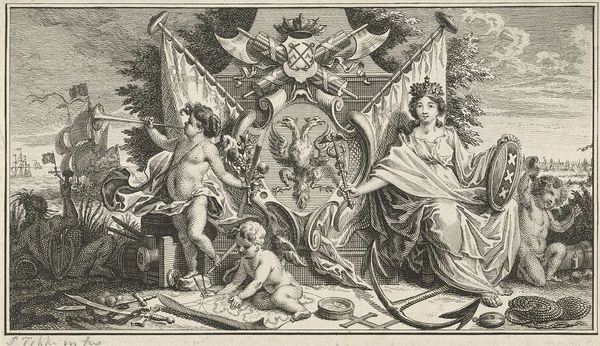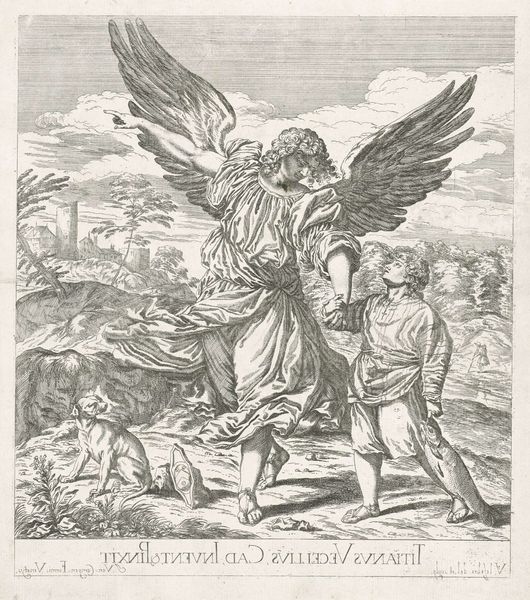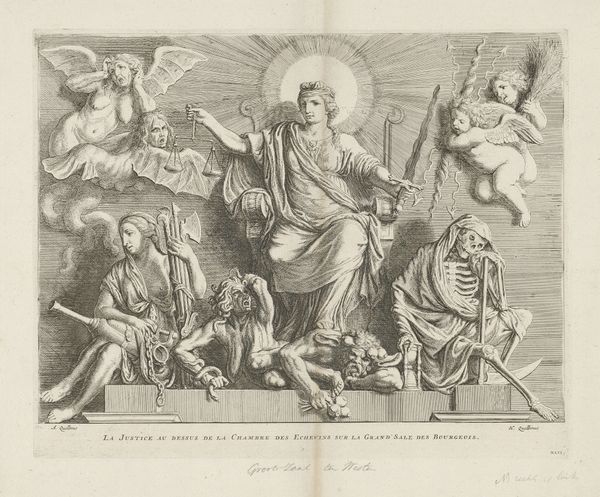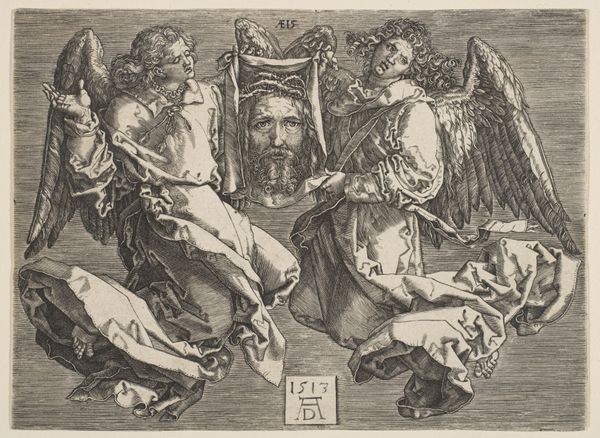
Dimensions: height 252 mm, width 282 mm
Copyright: Rijks Museum: Open Domain
Curator: Flanking us today in gallery 225 is a stunning piece titled "Astrologia (Sterrenkunde)," an engraving realized after 1565. The print work is credited to Cornelis Cort. You'll find it nestled here at the Rijksmuseum. Editor: Immediately, I'm struck by its rather confident and assertive tone, given its dense and allegorical style. There's so much activity rendered through the precision of engraving, offering us both an abundance of information and sensory complexity. Curator: Indeed. Cort's creation presents an allegorical figure of Astrology, flanked by symbols of knowledge and instruments of cosmic observation. Look closely at how the artist blends scientific aspirations with mythological and landscape elements. What narratives emerge when viewing this work today? Editor: For me, this speaks directly to power. Here, astronomy, an early science used to justify class division and colonial control, is glorified and celebrated. The composition feels inherently unequal—a celestial, winged goddess sits at center stage, while an old sage shares the picture, assisting in understanding the earth's spheres, yet his positioning behind suggests subordination. Curator: Interesting. Consider then how such depictions were received within 16th-century European intellectual circles. Engravings like these democratized knowledge; disseminating scholarship and worldview from the few to many through accessible and affordable visual media. Is democratization inherently a force for positive change? Editor: I agree that accessibility matters. At the same time, we should always scrutinize how and by whom knowledge is being presented. Whose versions of history and "truth" are becoming popularized? If these images normalize power dynamics—for example, that only old men have expertise—are we making true progress? Curator: I appreciate your call for constant interrogation of systems, regardless of how knowledge is dispensed. The composition here invites us to consider where power resides. Whether divinely inspired or rationally deduced, the artwork speaks to humanity's enduring desire to map our place in the cosmos. Editor: And while our understanding has evolved vastly since Cort’s time, that basic yearning for meaning, understanding, and maybe control, remains constant. Looking at "Astrologia," one must consider that visual culture never just passively reflects the dominant order; it plays a part in actively creating and solidifying it. Curator: That’s a critical point—power isn't just portrayed, it is performed. The image here has not only served as a window to early scientific aspirations but perhaps as a mirror reflecting ourselves.
Comments
No comments
Be the first to comment and join the conversation on the ultimate creative platform.
